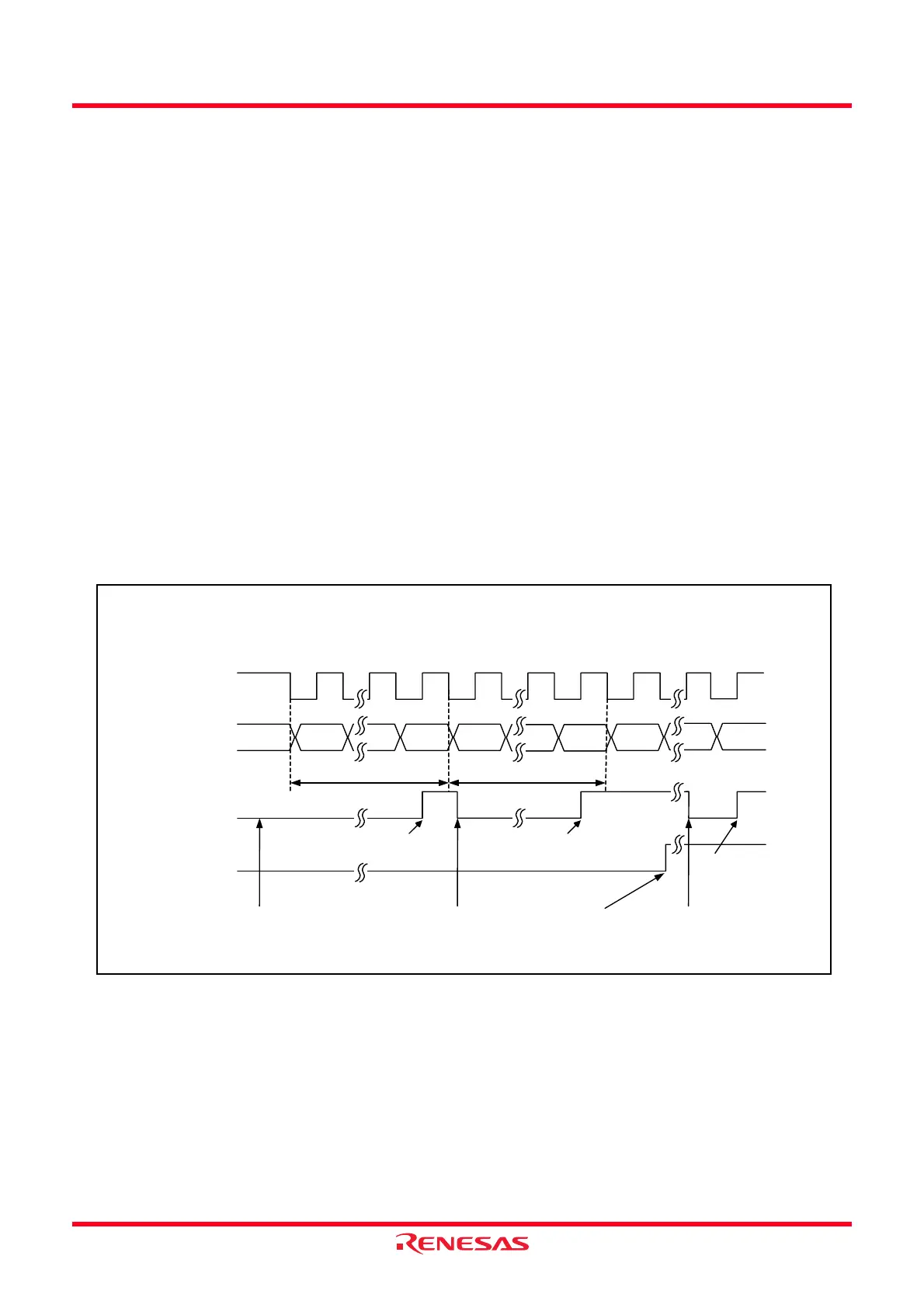R8C/20 Group, R8C/21 Group 16. Clock Synchronous Serial Interface
Rev.2.00 Aug 27, 2008 Page 300 of 458
REJ09B0250-0200
16.2.5.3 Data Reception
Figure 16.15 shows an Example of Clock Synchronous Serial I/O with Chip Select Operation for Data
Reception (Clock Synchronous Communication Mode).
During the data receive, the clock synchronous serial I/O with chip select operates as described below. When
the clock synchronous serial I/O with chip select is set as a master device, it outputs a synchronous clock and
inputs data.
When the clock synchronous serial I/O with chip select is set as a salve device, it outputs data synchronized
with the input clock. When the clock synchronous serial I/O with chip select is set as a master device, it outputs
a receive clock and starts receiving by performing dummy read on the SSRDR register.
After the 8-bit data is received, the RDRF bit in the SSSR register is set to 1 (data in the SSRDR register) and
receive data is stored in the SSRDR register. When the RIE bit in the SSER register is set to 1 (enables RXI and
OEI interrupt request), the RXI interrupt request is generated. If the SSDR register is read, the RDRF bit is
automatically set to 0 (no data in the SSRDR register).
Read the receive data after setting the RSSTP bit in the SSCRH register to 1 (after receiving 1-byte data, the
receive operation is completed). The clock synchronous serial I/O with chip select outputs a clock for receiving
8-bit data and stops. After that, set the RE bit in the SSER register to 0 (disables receive) and the RSSTP bit to
0 (receive operation is continued after receiving the 1-byte data) and read the receive data. If the SSRDR
register is read while the RE bit is set to 1 (enables receive), a receive clock is output again.
When the 8th clock rises while the RDRF bit is set to 1, the ORER bit in the SSSR register is set to 1 (overrun
error occurs: OEI) and the operation is stopped. When the ORER bit is set to 1, receive can not be performed.
Confirm that the ORER bit is set to 0 before restarting receive.
Figure 16.16 shows a Sample Flowchart of Data Reception (MSS = 1) (Clock Synchronous Communication
Mode).
Figure 16.15 Example of Clock Synchronous Serial I/O with Chip Select Operation for Data
Reception (Clock Synchronous Communication Mode)
SSCK
b0
SSI
• When SSUMS bit = 0 (clock synchronous communication mode), CPHS bit = 0 (data download at
even edges) and CPOS bit = 0 (“H” when clock stops)
b0b7
1 frame
RDRF bit in
SSSR register
0
1
RSSTP bit in
SSCRH register
0
1
Dummy read in
SSRDR register
Process by
program
RXI interrupt request
generation
b0
b7 b7
1 frame
RXI interrupt request
generation
Read data in SSRDR
register
Read data in
SSRDR register
Set RSSTP bit to 1
RXI interrupt request
generation

